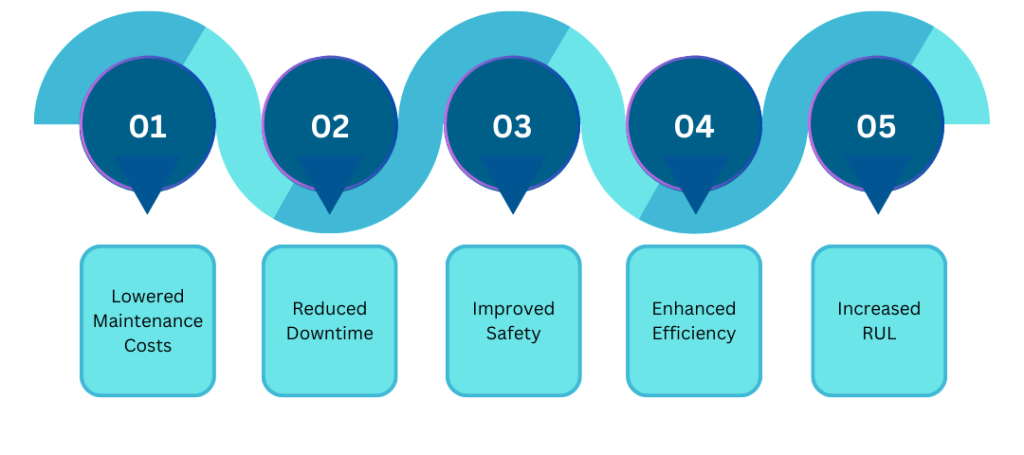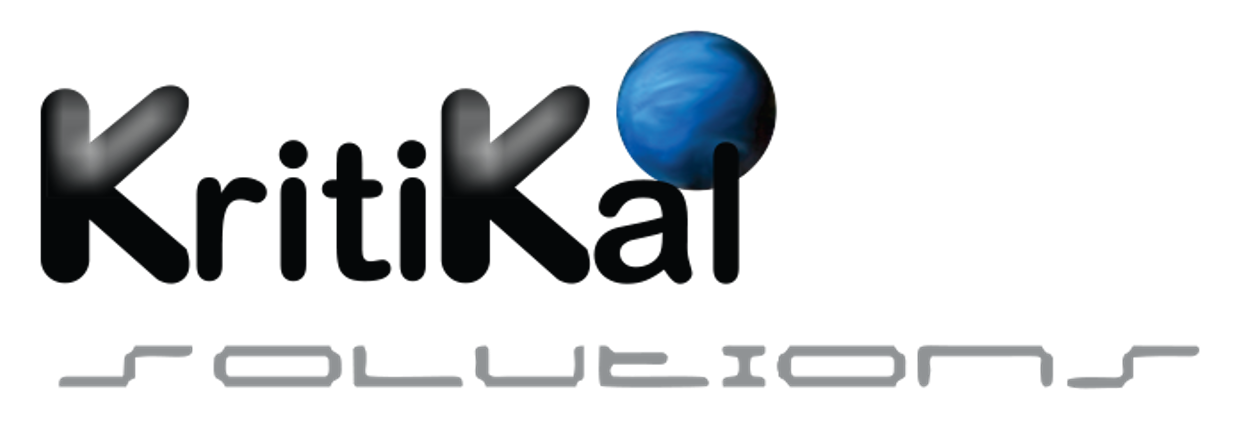IoT refers to the Internet of Things which is a network including objects, electrical appliances, automobiles, and other physical devices like virtual assistants, cobots etc. These devices and objects are embedded with networks, sensors and central monitoring system to enable them with data collection, reporting and actuation. IoT devices are powered by network communications such as Bluetooth, Wi-Fi, Zigbee, cellular networks (2G/3G/4/5G) and low-power industrial protocols (MQTT, OPC-UA) for data transmission. They consist of sensors and actuators for collecting data from the environment and transmitting it to software that extracts valuable insights and derives useful information using AI/ML algorithms.
Unlike traditional approaches that involve regularly scheduled maintenance regardless of the exact location of the issue in the machinery, predictive maintenance is based on real-time monitoring and analysis. Predictive maintenance is a strategy to predict failure of a machine or equipment based on data and intelligent video analytics. This can reduce downtime and allow time to gather insights on improving the machine’s efficiency through proactive maintenance. IoT-enabled devices and networks are used to collect data from machines in real-time for predictive maintenance in manufacturing. The global market for predictive maintenance was valued in 2022 at US $7.85 billion and is expected to grow at a CAGR of 29.5% till 2030.

Market size of predictive maintenance in manufacturing between 2023 and 2033
Implementation of Predictive Maintenance Solutions
1. User Requirements: The foremost step is to identify assets, machinery, infrastructure, physical components and processes from the inventory or operational set up that need to be continuously monitored. One can consider defect detection in manufacturing and historical maintenance data analysis for patterns or machinery that require such monitoring, are crucial for the process, require high maintenance expenses or are likely to cause potential consequences around safety, customer expectation, operations and compliances on failure. Users can also decide on the pros and cons of cloud migration solutions or edge processing (placed near sensors and analyzing devices) as per the functioning of the plant and latency requirements.
2. Predictive Models: Users need to define the maintenance problem to be addressed, performance metrics or failure modes to be predicted and systems to be monitored. To develop training data, appropriate sensors and IoT devices are installed over the equipment to be monitored. From the collected and analyzed data, the most informative features are chosen and a predictive modeling technique suitable to the operation is selected. The model is evaluated as per its performance on the validation dataset and deployed in the production environment, where it is continuously monitored through iterative processes to improve its accuracy in predicting and optimizing maintenance schedules. Some of the commonly used models in vision systems for manufacturing as per specific applications include the following:
- Regression Analysis: Include Linear Regression for predicting continuous outcomes as per given factors, for example, prediction of the remaining useful life (RUL) of a turbine based on factors like temperature and vibration readings.
- Time Series Analysis: Includes Autoregressive Integrated Moving Average (ARIMA) for modeling time-dependent data, for example, forecasting the number of required maintenance actions based on historical trends.
- Classification Models: Includes Logistics Regression for classifying equipment into categories such as susceptible to failure and otherwise based on predictor variables. It also includes Decision Trees and Random Forests that classify based on multiple features and their complex relationships, for example, classifying whether a pump is likely to fail in the next 30 days based on sensor data.
- Anomaly Detection: Includes Isolation Forest for effective outlier and potential failure detection and Neural network-based Autoencoders that learn a compressed representation of normal behavior to detect anomalies, for example, detection of unusual vibration data or exceeding a certain temperature range that signals impending manufacturing equipment failure and can also be used for warehouse management in logistics.
- Machine Learning Algorithms: These include Support Vector Machines (SVM) for classifying linearly inseparable data and Gradient Boosting Machines (GBM) like XGBoost, LightGBM for handling complex interactions and non-linearities, for example, combining results from historical failure data, sensor readings and operating conditions to predict equipment failure.
- Deep Learning: Includes neural network types like Recurrent Neural Networks (RNN) and Short-Term Memory (LTSM) Networks that capture temporal dependencies and patterns in sequential data for time-series analysis, for example, turbine failure prediction based on historical sensor data sequences.
- Survival Analysis: Includes Cox Proportional Hazards Model which estimates the time until an event occurs by considering covariates, for example, estimating the probability of failure of pumps while accounting for operational conditions.
3. Data Collection: After the model is integrated with the maintenance workflow, Predictive maintenance solutions are configured collect and log data into data loggers in the form of temperature, pressure, vibration, noise, humidity, fluid levels, motion, light etc. parameters from sensors, GPS trackers for moving bots, meters and other monitoring devices at regular intervals. One must also consider selecting the appropriate type of sensor as per requirement, for example, Bourdon tubes to measure fluid pressure in hydraulic or pneumatic equipment in medical instruments or beverage manufacturing plants etc. The sensors must be placed and calibrated properly with the equipment and supplied with adept power. The aggregated, packaged and encrypted data transmission must securely take place through network protocol compatible gateways, access points with authentication mechanisms and network infrastructure to a robust IoT platform.
4. Data Analysis: The received data is preprocessed and filtered to reduce noise and extract required information. Machine learning-based advanced techniques analyze anomalies and trends with AI pattern recognition to identify any deviations from regular operations. Such data is stored, and correlation is calculated between historical cases of equipment failure and the current data collected.
5. Failure Detection: After correlation is established between historical and real-time data by predictive maintenance solutions, certain thresholds are established which assist in diagnosing early features of faults and subsequent timely intervention.
6. Report Generation: Faults detected are reported through visual representations to convert insights into actions and conduct informed decision-making. Users can analyze complex datasets by interpreting heat maps, charts, graphs, dashboards, tables etc. and identify outliers, patterns and trends indicating potential machinery failure. Complementing such visualization over human machine interface design for preventive and predictive maintenance, are reporting tools that on-demand or automatically offer summarized data on equipment performance, key trends, maintenance costs and activities, mean time between failures, machinery downtime and other important metrics.
7. Maintenance Schedule: In case an issue is identified and reported that crosses the set threshold, the required maintenance planning is put into action. This may include part replacement and optimal resource allocation causing minimal or no disruption in operations and reduced expenses.
8. Feedback Integration: The maintenance team with domain expertise must be involved in identifying the assets to be monitored that frequently cause bottlenecks and scheduling checkups. The working of predictive maintenance solutions must be aligned with the insights and feedback provided by the team. The solution must adapt to changing conditions, operations, compliances and industry, which need to be reflected in its processes including data collection and analysis.

Working of IoT & predictive maintenance in a manufacturing environment
Advantages of Using IoT for Predictive Maintenance
Being a proactive approach, predictive maintenance involves various data analytics strategies to schedule equipment maintenance as per impeding failure. Let us go through some reasons why IoT for predictive maintenance should be adopted in manufacturing:
Low Downtime
It becomes easier for manufacturing companies to schedule maintenance during planned downtime through predictive maintenance to avoid production failure. The solution is based on machine learning algorithms that analyzes real-time data of machine conditions, patterns and accurately predicts failure assisting in preventive and predictive maintenance. Manufacturing companies can avoid unplanned outages and run their operations seamlessly without any negating impact on production schedules.
Reduced Costs
As the need for emergency repairs reduces and the lifespan of assets increases with IoT and predictive maintenance, the overall maintenance costs also reduce substantially. Proactive and early detection of persisting issues in machinery can avoid the need for replacements, repairs and related costs. It also reduces resource-related expenses such as those utilized for routine checks, as IoT sensors and solutions analyze equipment data to predict the type of maintenance to be expected and the location. This assists manufacturing companies to avoid unnecessary delays, smooth operations, optimized resource utilization and lowered maintenance costs.
Improved Efficiency
The earlier allotted time for emergency scheduling of maintenance activities and conducting the same can now be used by resources to focus on other manufacturing areas, thus enhancing operational efficiency. IoT sensors help in detailing out the current condition of machinery, their continuous monitoring, analyzing the optimal schedule for maintenance and streamlining the same. Manufacturing plants can pay equal attention to individual assets, lower resource workloads, delays and prepare for peak production periods.

Advantages of predictive maintenance in manufacturing
Enhanced Safety
IoT for predictive maintenance assures that all equipment is functioning in a proper manner and does not pose any threat of accidents and injuries. They notify personnel in-charge regarding the risks of equipment’s operations which may not be operating in safe parameters and have the potential to lead to hazardous conditions. IoT efficiently automates manufacturing processes, enables convenient remote monitoring, management and control over systems and devices by leveraging connectivity and analytics.
Increased Reliability
With predictive maintenance, one can prevent sudden machinery breakdowns and address expected issues before time to extend asset lifespan. IoT-based solutions can provide a comprehensive view of asset operations including suboptimal conditions and small failures posing wear and tear of the same, which can not only be countered in time but also lead to increased performance. With preventive and predictive maintenance, the operations of each piece of equipment are given ample consideration.
Scalability & Security
When combined, IoT and predictive maintenance can easily accommodate scaling up and down of manufacturing devices and users. The resulting solutions are flexible, can be seamlessly integrated and new equipment can be added without disrupting the existing system. Also, the collected sensitive data is encrypted before transmission against data breaches and robust cyber security measures are put in place to avoid unauthorized access and related threats.
Take the Next Step with KritiKal
The interconnected IoT network of smart devices collectively enables various aspects of IT solutions for manufacturing such as automation of industrial processes, delivery, transportation and supply chain, machinery and environmental monitoring. IoT-driven predictive maintenance in manufacturing benefits manufacturing companies by providing seamless, reliable and cost-effective machinery operations with alerts for timely intervention. It is important to implement robust security measures such as data encryption and authentication mechanisms to assure integrity and confidentiality of data during transmission via a real-time streaming connection featuring periodic data uploads, apt network bandwidth and low latency.
KritiKal Solutions has developed and fine-tuned numerous efficient models for assisting SMBs, Fortune 500 companies, OEMs and manufacturing giants in implementing IoT for predictive maintenance. We understand that integration of IoT-enabled predictive maintenance needs a multidisciplinary approach involving AI/ML, data engineering and collaboration with maintenance resources which our team of experts formulates and delivers seamlessly. Our IoT-enabled devices leveraging such models have proactively identified and prevented equipment failure over years. Please contact us at sales@kritikalsolutions.com to avail our services.

Anil Chaudhary currently works as a senior Embedded Engineer at KritiKal Solutions. He has expertise in firmware embedded electronics development, PCB design, circuit design, testing and more. He has helped KritiKal with the timely delivery of projects to some major clients.



 Global
Global  United States
United States 
